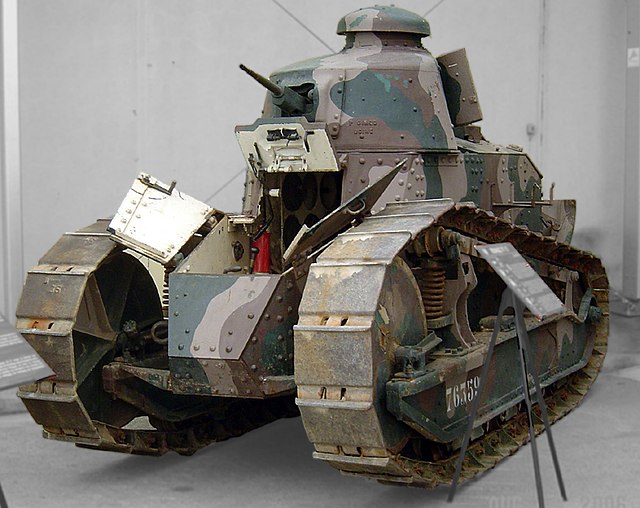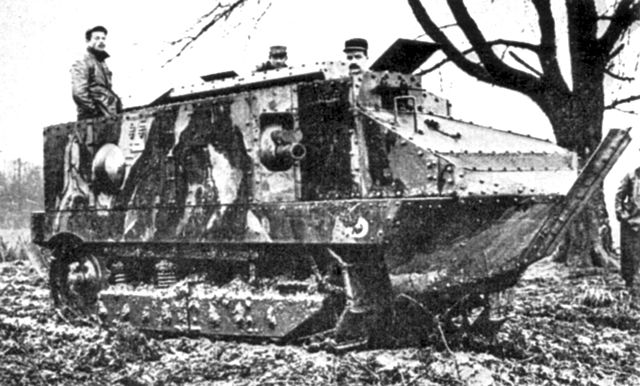The AMC 35, also known under a manufacturer's designation Renault ACG-1, was a French medium cavalry tank of the later Interwar era that served in the Second World War. It was developed as a result of the change of the specification that had led to the design of the AMC 34, calling for a vehicle that was not only well-armed and mobile but also well-armoured. Due to technological and financial problems production was delayed and limited. The AMC 35 was one of the few French tanks of the period featuring a two-man turret.
ACG1, displayed at the Musée des Blindés, Saumur, France.
AMC 35 on display at the Musée des Blindés in Saumur
One of the Belgian vehicles burning in May 1940
The APX2-B turret from Zeebrugge, preserved in the Army Museum of Brussels
French development into tanks began during World War I as an effort to overcome the stalemate of trench warfare, and largely at the initiative of the manufacturers. The Schneider CA1 was the first tank produced by France, and 400 units were built. The French also experimented with various tank designs, such as the Frot-Laffly landship, Boirault machine and Souain experiment. Another 400 Saint-Chamond tanks were manufactured from April 1917 to July 1918 but they were underpowered and were of limited utility because the caterpillar tracks were too short for the tank's length and weight. The most significant French tank development during the war was the Renault FT light tank, which set the general layout for future tank designs and was used or redesigned by various military forces, including those of the United States.
The Renault FT, the first "modern" tank to enter production
Schneider CA1, the first French tank
French Saint-Chamond tanks had long bodies with a lot of the vehicle projecting forward off of the short caterpillar tracks, making them more liable to get ditched in trenches.
Renault FT tanks being operated by the US Army in France. Light tanks with a crew of only two, these were mass-produced during World War I.








